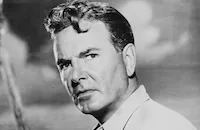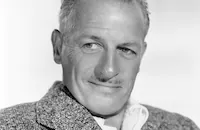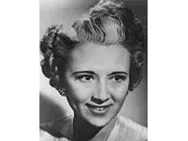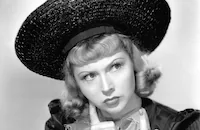Thunder Birds

Brief Synopsis
Cast & Crew
William A. Wellman
Gene Tierney
Preston Foster
John Sutton
Jack Holt
Dame May Whitty
Film Details
Technical Specs

Synopsis
World War I flying ace Steve Britt goes to Thunderbird Field in Arizona, where he hopes to become a civilian flight instructor. Thunderbird Field is the initial training site for many American, British and Chinese military pilots, and Steve, who is too old to enlist in the Army Air Corps himself, wants to contribute to the war effort in any way he can. Steve's old pal, Colonel "Mac" MacDonald, recommends Steve for the post. Another reason why Steve moves to Arizona is so that he can see Kay Saunders, a former girl friend who lives on the nearby ranch of her grandfather, Colonel Cyrus P. "Gramps" Saunders. After Kay, who broke off her relationship with Steve because of his irresponsibility, rejects his advances, he then concentrates on his students. Among them is Peter Stackhouse, an English intern who requested a transfer from the medical corps to the RAF. Steve knew Peter's father, a heroic pilot who was shot down during World War I, and is therefore dismayed by Peter's adverse reaction to flying. Peter gets ill every time he goes up, and after it happens on numerous occasions, Steve tries to convince him that there would be no shame in serving in another branch of the military. Peter explains that all the men in his family have been flyers, and that after his brother was shot down recently, Peter promised his grandmother, Lady Jane Stackhouse, that he would join the RAF to carry on the family tradition. Peter's nausea when flying is due to a fear of heights caused by a fall from a horse during childhood, but Steve believes that he can overcome it. While Peter is continuing his training, he makes the acquaintance of Kay, who is attracted to the charming Englishman. Peter falls in love with her, and although Steve becomes his adversary on the romantic front, he vows to keep his feelings for Kay separate from his job as Peter's instructor. Mac and RAF Squadron Leader Barrett want to wash out Peter, who is the only one in his class who has not yet soloed. They stress the urgency of training pilots quickly, but Steve maintains that Peter has got the right stuff and threatens to quit if he is removed from the program. In a last ditch effort to get Peter over his fear, Steve takes him up on a flight then bails out of the plane. Despite a sudden dust storm, Peter flies brilliantly and rescues Steve, whose parachute is being dragged by the storm. The storm destroys Peter's plane, however, and Mac and Barrett, believing that the damage was caused by incompetence, kick Peter out of the school and fire Steve. That night, however, at a USO dance, Kay convinces Mac and Barrett to give them another chance. The next morning, Peter makes good on Steve's faith in him by executing an excellent solo flight. Kay tells Steve that she will marry Peter, then persuades him to stay on as an instructor at Thunderbird, where his expertise can help to win the war.

Director

William A. Wellman
Cast

Gene Tierney

Preston Foster

John Sutton

Jack Holt

Dame May Whitty

George Barbier

Richard Haydn

Reginald Denny
Ted North

Janis Carter
Archie Got
Lawrence Ung
Bruce Wong
Allen Jung
Montague Shaw

Nana Bryant
Viola Moore

Bess Flowers
Connie Leon
Walter Tetley
Bill Mcguire
Richard Woodruff
Robert Herrick
Anthony Marsh

Peter Lawford

Joyce Compton
Kay Vallon
Alan Baldwin
Marvin Jones
John Whitney
Herbert Patterson
Allan Nixon

Dick Hogan
George Ford
Harry Strang
Charles Tannen
Donald House
Selmer Jackson
Karen Palmer
Crew
James Basevi
Sid Bowen
Harry Brand
Alfred Bruzlin
David Buttolph
Robert Crawford
Melville Crossman
Richard Day
W. F. Fitzgerald
Fred Fox
Fred Fox
John Gunther
Roger Heman
Harry Jackson
Henri Jaffa
Natalie Kalmus
William Koenig
Thomas Little
Paul Mantz
Ray C. Moore
Ernest Palmer
Guy Pearce
Phil Rosen
Ad Schaumer
Charles Stallings
Laurence Stallings
Don Swander
Walter Thompson
Dolly Tree
Lamar Trotti
Lamar Trotti
Alfred Werker
Darryl F. Zanuck

Film Details
Technical Specs

Articles
Thunder Birds - William A. Wellman's THUNDER BIRDS on DVD
Preston Foster plays a former combat flyer who takes a job training new Army Air Force recruits at Thunderbird Field in Arizona, partly because he's too old to serve in combat again and partly because his former flame, Gene Tierney, lives on a nearby ranch. One of his cadets (John Sutton) is the son of an old buddy of Foster's who died in WWI, and Foster takes the young British man under his wing, trying to cure him of his fear of heights and tendency to get airsick. The problem is that Sutton meets and falls for Gene Tierney (and who can blame him?) as Sutton tries to rekindle his own romance with her. Punctuating this conflict are several flying sequences, scenes at the ranch, in a town, and inside the training camp. They all go down especially well in Technicolor.
Gene Tierney was 21 when she made this picture (her ninth), and she gets not one but two fun entrances - the first when she's swimming in a water tower and is buzzed by Preston Foster in an airplane (it blows her towel down to the ground), and the second in a clothing store when John Sutton and buddy see only her legs peeking through a dress rack. Tierney brings, aside from her stunning beauty, much charm and naturalness to her part.
Elsewhere in the cast is veteran supporting player George Barbier as Tierney's grandfather (he would die of a heart attack just three years later) and the ever-stalwart Dame May Whitty as Sutton's grandmother. She plays her one sequence with great no-nonsense oomph. As Foster says after listening to Sutton describe her: "What a dame!"
With a working title of A Tommy in the U.S.A., Thunder Birds was meant by Fox studio chief Darryl F. Zanuck to be a follow-up to A Yank in the R.A.F. (1941). It ended up being one of two movies (along with Buffalo Bill, 1944) that William Wellman agreed to direct for Zanuck in exchange for permission to direct a picture Wellman really wanted to make: The Ox-Bow Incident (1943). But even though Wellman's heart wasn't exactly in Thunder Birds, it's still rendered with professionalism and good craftsmanship.
At one point it was announced that Dana Andrews would play the lead in Thunder Birds. Andrews and Tierney had already appeared together in Tobacco Road (1941) and Belle Starr (1941) and would soon make the enduring classic Laura (1944). Ultimately they would pair up for five films including one directed by Wellman, The Iron Curtain (1948).
Fox Home Entertainment's DVD has few frills - just a trailer (which is in pretty good shape technically) and clips of two newsreels which show Tierney christening an airplane and making her handprints outside Grauman's Chinese Theater. But really, who needs extras for a little 78-minute vault title like Thunder Birds? It's enough that the picture quality is so astoundingly crisp, clear and vibrant.
For the record, this film's on-screen title reads Thunder Birds [Soldiers of the Air].
For more information about Thunder Birds, visit Fox Home Entertainment. To order Thunder Birds, go to TCM Shopping.
by Jeremy Arnold

Thunder Birds - William A. Wellman's THUNDER BIRDS on DVD
Quotes
I hope you're not angry?- Peter Stackhouse
That you were interested in my legs? Why not at all. That's what they're there for.- Kay Saunders
Trivia
Notes
The working title of this film was A Tommy in the U.S.A. The picture's opening title card reads: "Twentieth Century-Fox presents Thunder Birds [Soldiers of the Air]." Thunderbird Field, an air school in Arizona, was one of three Arizona-based training ground for many pilots from the United States, Great Britain, China and other countries belonging to the Allied Nations. The field was owned by agent, theatrical producer and amateur pilot Leland Hayward, according to a May 4, 1942 Life article, although a studio press release asserted that Joan Fontaine and her husband, Brian Aherne, were also co-owners of the property, which began as a school for civilian air pilots. According to Hollywood Reporter news items and information in the Twentieth Century-Fox Records of the Legal Department, located at the UCLA Arts-Special Collections Library, the picture was shot on location in Arizona at Thunderbird Field and Falcon Field, both near Phoenix, and at a ranch near Mesa. The files also note that in exchange for being permitted to film at the two air fields, the studio was required to build a swimming pool at each facility.
According to a December 24, 1941 Hollywood Reporter news item, the studio purchased a magazine story entitled "Spitfire Squadron," written by Arch Whitehouse, with the intention of incorporating "some of the information and dialogue for use in the temporarily titled A Tommy in the USA." According to the legal files, Whitehouse's material was not used and was purchased only as protection because of its similarity to a first draft completed by contributing writer Laurence Stallings. A November 1941 Hollywood Reporter news item announced that executive producer Darryl F. Zanuck had purchased a story called "Thunderbirds" by Carl Krueger, but it is unlikely that the story, which was about "the first group of U.S. Army pilots on the Atlantic ferry shuttle," was used for the final picture. The legal records, as well as the Twentieth Century-Fox Produced Scripts Collection, indicate that Frank S. Nugent worked on a story outline for the picture, but the extent of his contribution to the released film has not been determined.
A July 1941 Hollywood Reporter news item stated that Len Hammond had been assigned as the picture's associate producer, and that it was a "follow-up" to the studio's recently completed A Yank in the R.A.F. (see below). In October 1941, Hollywood Reporter noted that Bruce Humberstone had been assigned to direct the film. December 1941 Hollywood Reporter news items stated that Archie Mayo was due to direct the picture, and speculated that the picture's theme and title would be changed due to the U.S.'s entry into active fighting in the war. According to a February 1942 Hollywood Reporter news item, Dana Andrews was originally signed for the "romantic lead opposite Gene Tierney," and a February 1942 studio press release announced that James Gleason had been signed for a supporting role. A March 1942 Hollywood Reporter news item includes the following actresses in the cast, although their appearance in the completed picture has not been confirmed: Dorothy Dearing, Vivian Mason, Mary Scott, Claire James and Elaine Fenwick. Although Iris Adrian is credited in the role of "Saleswoman" by the Variety review, her scenes were reshot with actress Joyce Compton. Thunder Birds marked the producing debut of screenwriter Lamar Trotti.














